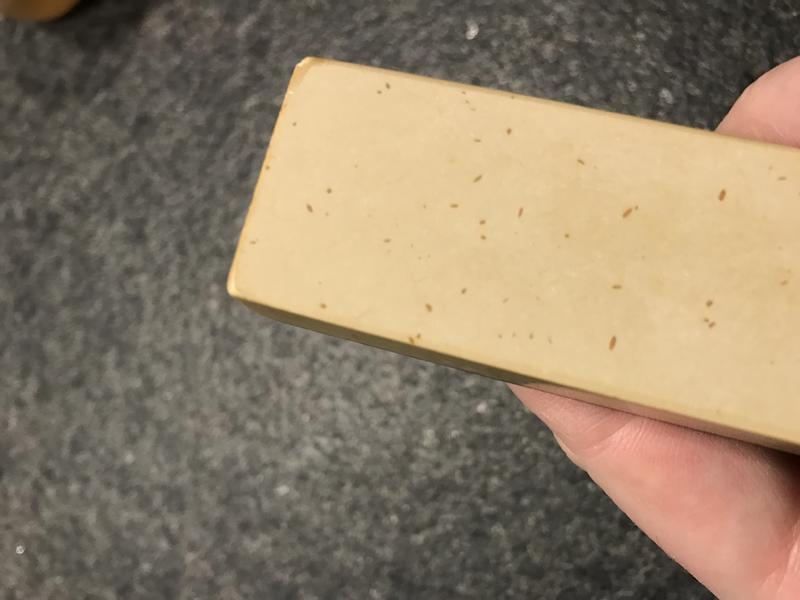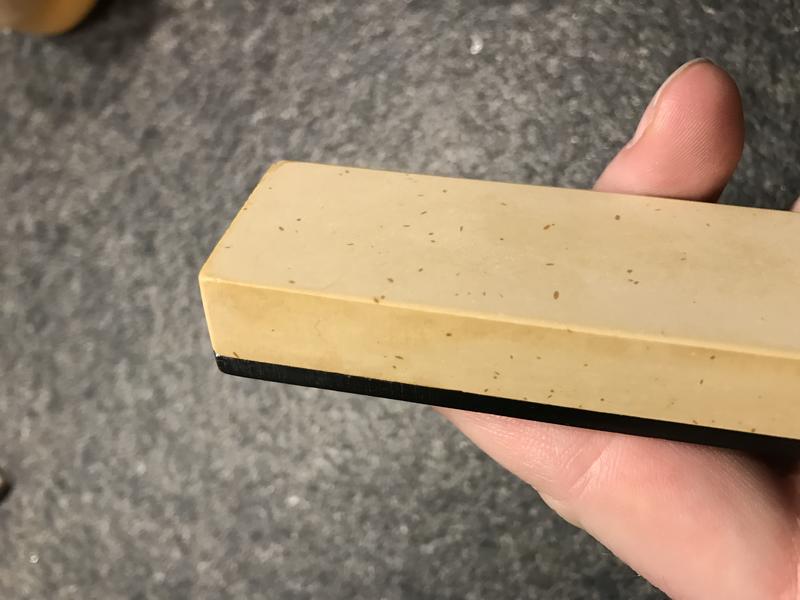I bought this ancient paddle from France last week. It was advertised as a coticule though given the color it could have been a few things. It showed up early today and instantly got interesting. I incrementally shimmed out the end plates with old transit cards and a de razor blade till I could prize them free. I was hoping the nails would answer the age but they are homemade nails made from peening wire. After that, I had to cook it a bit to release hide glue. As usual, that smell had me heaving.. I eventually get it out and it's... different. A pit pingy tap. Light not really passing, strange inclusions. I go to lap it on 120 and it has a pronounced hump but it cones out without some life or death fight but it is damn hard. Go up to 3000 and then burnish with a la verte slurry stone. It is now acting as a mirror at a 90 degree angle. Mirroring as aggressively as my black gila when I experimented with high polish. I have been playing around with some blades on it and this thing is phenomenally fine. I have no clue what it is. It doesn't have the dead ark feel.










Last edited by a moderator:









